There’s no doubt that there is no CNC machining without the CNC machining tools. We use these tools for a variety of operations, and they make the job easier and automated. They are different CNC machine tools, from the milling to the turning, drilling, or electrical discharge tools.
While each of these categories has its function and uses, there’s no doubt that one of the most utilized types is the CNC cutting tools (CNC milling machine tools). Due to the fact that these milling cutters can change the tools on them automatically during the CNC machining process, they are one of the easiest to find in a machining workshop.
This article will discuss the types of milling cutters, the types of materials used in making milling cutters, and the tips to consider when choosing cutters. If you like to know more about milling machine tools, then you should read this article to the end.
Types of Milling Cutters
There are different milling cutters, with each having distinctive features and uses. Here is a educational video that introduces the CNC tools:
As mentioned in the video, some examples of the most popular milling cutters include:
End Mills
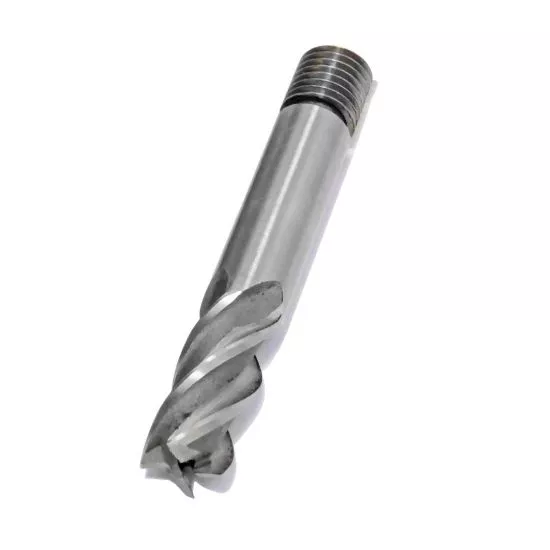
End mills are one of the most popular types of milling cutters, and they are quite similar to drills due to their ability to cut materials axially. There are different variants of the CNC machine tool. They differ in the number of flutes and the different types of noses they have. Some could have up to eight flutes or more. The types of noses include:
- Flat: The flat-faced end mills is the general-purpose variant compatible with cutting out 2D features.
- Ball nose: The ball-nose end mill is suitable for tasks like 3D contours and curves.
- Bull nose: This variant has a flat end and rounded sides and is perfect for roughing and filleting.
Face Mills
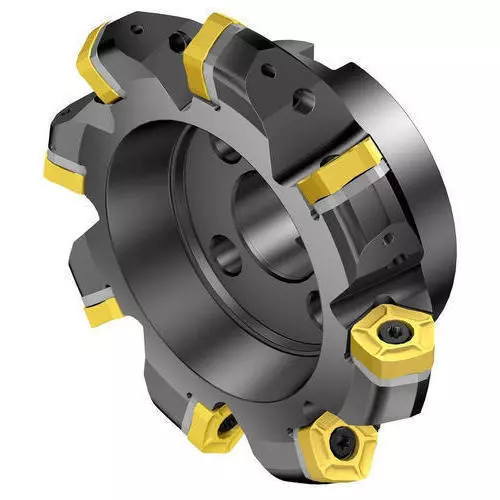
This is a more varied type of milling cutter. It has a flat head with replaceable carbide cutting edges. Due to the fact that these cutting edges are on the side of the milling cutter, you can only cut horizontally and not axially. Machinists use face mills to make flat sections on raw materials. One reason why they remain one of the best types of the milling cutter is due to their replaceable cutting inserts, which makes them last even longer and give a better quality of work over a long period. You can also easily replace the inserts instead of having to buy another tool.
Slab Mills
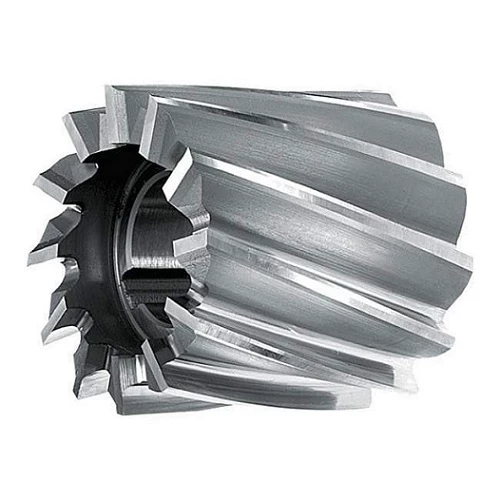
This type of mill cutter is not so common with modern machining centers. Machinists use them to mill flat surfaces as they have no side teeth. They have slab surfaces and are for general heavy-duty operations.
Involute Gear Cutters
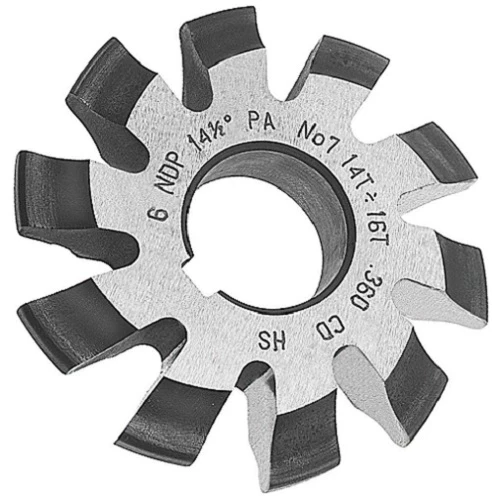
Machinists make gear cutters using a special type of milling machine known as a hobbing machine. The machine used to make the gear differs depending on the number of teeth of the gear you want to make.
Fly Cutters
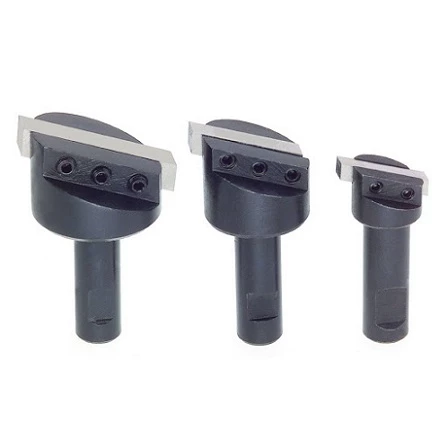
Fly cutters are cheaper types of face mills. They consist of the main tool body, which can have one or two tool bits attached to it. The double tool bit fly cutter is also known as double-end fly cutters or fly bars. Machinists use them for making broad and shallow cuts on a workpiece.
Ball Cutters
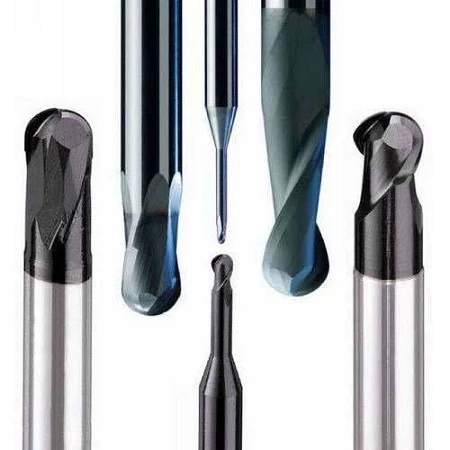
You can easily identify ball cutters due to their hemispherical cutting tip, which the cutter employs in making corner radiuses on perpendicular faces.
Roughing End Mills
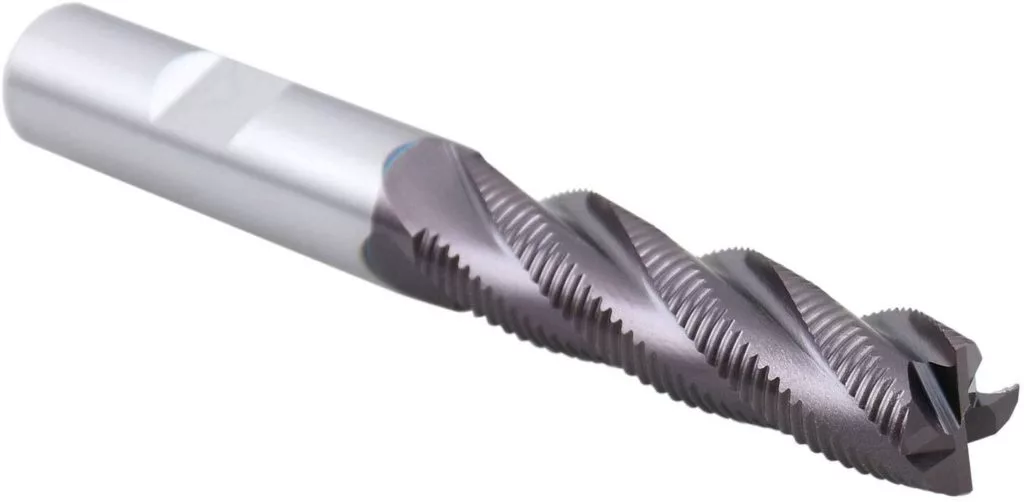
The roughing end mills are usually the go-to CNC machine tool if you have to remove a large piece of material from the workpiece in a short period. In the place of speed, the cutter sacrifices precision and leaves a rough finish on the workpiece. The cut bit of metals it produces is always easy to clear due to their small size.
Hollow Mills
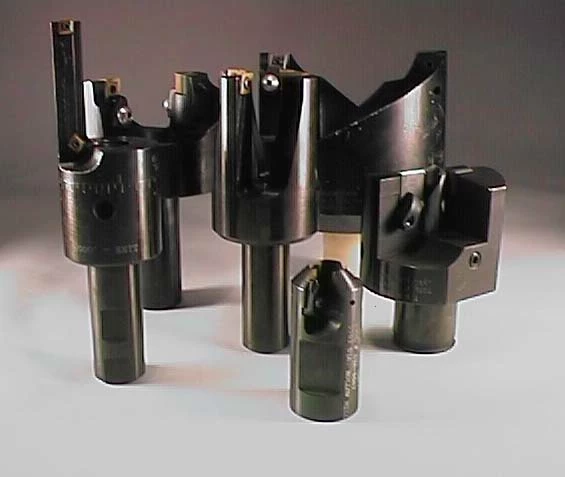
This mill has a pipe-shape and looks inverted in form. Machinists use hollow mills for creating shapes like full points and form radii due to the cutting edge of the mill, which you can find on the inner part of the mill.
Woodruff Cutters
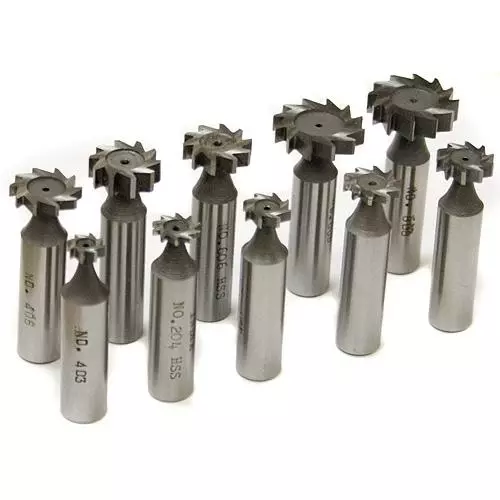
Machinists use woodruff or keyseat cutters to cut key slots into parts, for example, shafts. The cutting tools have teeth perpendicular to the outside diameter to produce suitable slots for woodruff keys.
Reamers
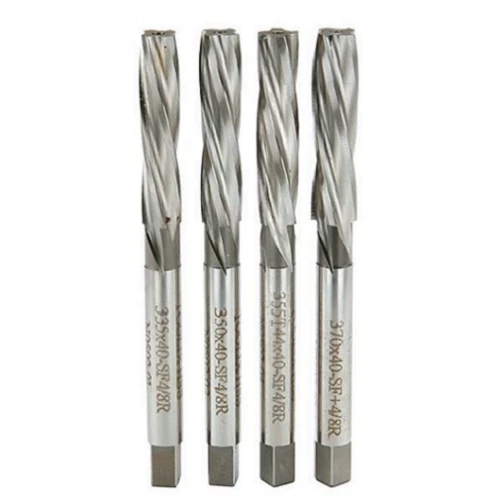
Machinists use reamers to widen holes existing in the workpiece and give them a more precise finish and exact diameter due to their much tighter tolerance compared to other tools.
Side-and-Face Cutters
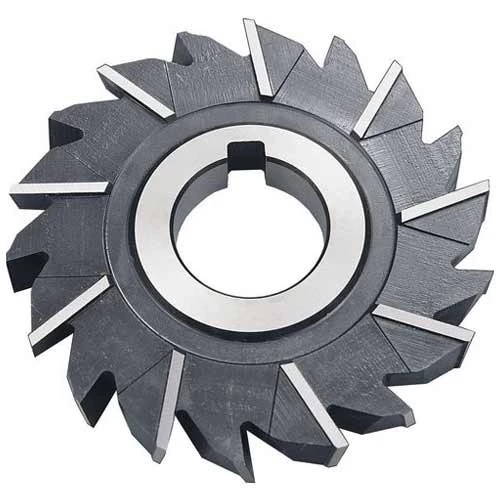
Just as the name implies, this type of cutter has teeth both on the side and circumference. Machinists use this cutter to cut slots and grooves. Although they have a functional similarity to end mills, their use has decreased due to new technological advancements.
What Type of Materials are CNC Machine Tools Made From?
The type of material your CNC machine tools are made from will determine the type of manufacturing process you can use them for. Let’s look at a few types of materials and the types of jobs CNC machine tools made out of them can handle:
Carbon Steel
This is the cheapest material used in the making of milling cutters. It contains 0.6 – 1.5% carbon, silicon, and manganese. The reason for its cheap price is because it is not a really durable material. Therefore, machinists use it only for low-speed operations like turning. If used for high-speed operations, the carbon steel will tend to degenerate faster as carbon steel has a melting point of 200 degrees Celsius. Due to its low melting point, it can only cut relatively soft materials like plastics or foam.
High-Speed Steel
High-speed steel, a better and more durable material than carbon steel, loses its hardness at 600 degrees Celsius. Its high melting point is due to the addition of some alloying metals like chromium, tungsten, and molybdenum in its manufacture. Just as the name implies, it is suitable for higher miller speeds and can withstand higher operating temperatures. This means it can cut even harder materials like steel or aluminium.
Cemented Carbides
Although this material is harder than high-speed steel, it is not as tough as high-speed steel. This means that although you can use them at higher operating temperatures without losing its hardness, it is more susceptible to cracking and chipping than high-speed steel. Due to their tendencies to crack, machinists mostly use them for high-quality surface finishes instead of cutting.
Cutting Ceramics
In the hardness aspect, cutting ceramics is the strongest of all four materials. However, they also remain very susceptible to cracking and whipping when used on hard materials. Machinists use them to cut tough, strong materials like superalloys and cast iron. Although they are resistant to corrosion and heat, we wouldn’t recommend them to be used as machining tools as they tend to have a short tool life. However, due to their ability to withstand high heat operations, they can work on tools like superalloys, cast iron, or hard steels.
Tips to Consider Before Selecting Milling Cutters
Choosing the right cutter for your job could be such a task, especially when you have to use the tool either at high temperatures or cutting hard materials. Here are a few tips to consider before picking the right milling bit:
The Material the Tool Is Made From
Just as we have listed above, high-speed steel remains one of the best options of tools. It gives you the best of both worlds in terms of toughness and hardness.
However, your need might have to determine the type of tool to pick. If you need a tool that is really hard for just short-term work, you might be better off with the cemented ceramides or cutting ceramics.
Tool Coating
The type of tool coating your CNC machining tool has also matters. Using coatings like titanium nitride improves the tool’s lifespan but also increases its cost. Also, some types of coatings make your tool less sticky, which means less lubricant use during work (further reducing the costs).
Number of Flutes
Flutes are the channels on a milling bit. The number of flutes determines the feed rate of a milling bit. However, a high number of flutes also means you’ll have a large milling bit, which leaves less space for metal bits cut off from the workpiece.
RapidDirect: A Great Choice for CNC Machining
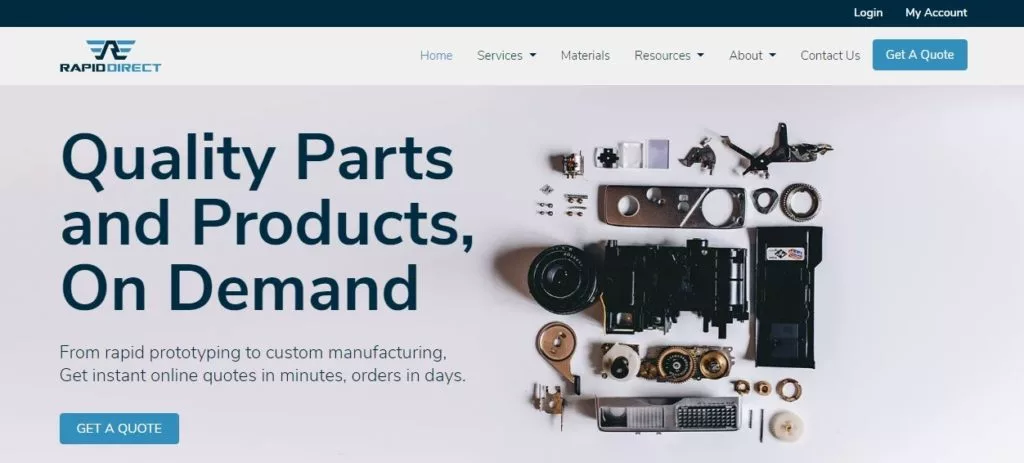
In every sector of engineering, experience in the field is a very vital factor and shows the credibility of the company. That is exactly what we offer you when you bring your jobs to RapidDirect. With nearly two decades of manufacturing experience, our staff members are experts in all types of CNC machining operations.
Maintaining communication and technical support with our clients is vital at RapidDirect. We offer unrivaled technical support to every project we work on. We make communication with our clients super-easy by providing 24/7 communication through our emails, phone, or website.
In terms of price, we offer a killer even for the best quality of jobs. Our prices are 30% lower than that of the average company and suit the budget of all kinds of startups.
Why wait for ages to get your quote when you can get it instantly with RapidDirect? Once you use our website quoting platform, the algorithm sends you back your quote within the next minute. Click the button below and have a try!
FAQs
Q: What types of milling cutters are the best?
A: It all depends on the type of project you’re working on. There are different types of processes and various types of tools to handle them.
Q: Which is better: a milling bit with coating or a milling bit without coating?
A: Coating your tools makes them last a lot longer and less sticky to some types of workpieces. Therefore, milling bits with coatings are generally better. However, coatings also increase the cost of the tools, so your budget should also be a determining factor.
Conclusion
Choosing the right tool for a CNC machining job is extremely vital as it is an important factor which determines if the project turns out to be a success or not. Therefore, you need to be familiar with the right tool for every kind of job. A better alternative is to reach out to us at RapidDirect to handle all your CNC machining jobs. Here are a few reasons why you should reach out to us.


